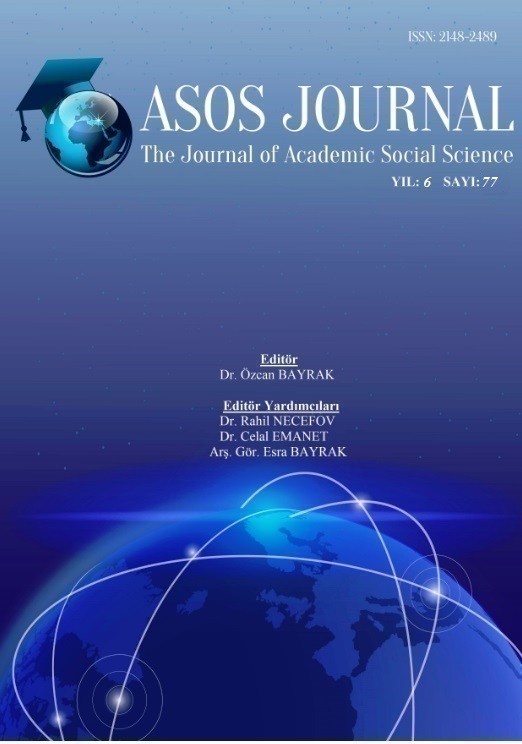Author :
Abstract
16. yüzyılda topraklarını genişletmek isteyen Osmanlı padişahları coğrafya çalışmalarını desteklemişlerdir. Böylece İslami coğrafya eserleri ilgi görmüş ve bazıları Osmanlı Türkçesine çevrilmiştir. Ayrıca müellifler, Arapça ve Farsça eserlerden yararlanarak ve çeşitli notlar ekleyerek telif eserler oluşturmuşlardır. Coğrafya çalışmalarında sıklıkla kullanılan kaynaklardan biri de Ebü’l-Fidâ’nın Takvîmü’l-Büldân adlı eseridir. Sipahizâde Muhammed bin Alî, Ebü’l-Fidâ’nın bu eserinden yararlanarak Evzahü’l-Mesâlik ilâ Marifeti’l-Büldân ve’l-Memâlik adlı Arapça bir eser yazmış ve III. Murad’a sunmuştur. Sipahizâde eserini Sokullu Mehmed Paşa’nın isteğiyle muhtasar olarak Osmanlı Türkçesine çevirmiştir. Çalışmamızda öncelikle Ebü’l-Fidâ, eseri Takvîmü’l-Büldân ve Sipahizâde hakkında bilgi verilmiştir. Ardından inceleme metnimiz olan Evzahü’l-Mesâlik’in kaynakları ve içeriğine değinilmiş, eserin nüshaları tanıtılmıştır. Ayrıca yazmanın seçilen bir nüshasının yazım, ses ve Türkiye Türkçesinden farklı dil özellikleri belirlenmeye çalışılmıştır. Evzahü’l-Mesâlik, yazıldığı döneminin dil ve kültür özelliklerini yansıtması, coğrafya terimlerinin zenginliği ve yer isimleri bakımından önemlidir. Bu nedenlerle incelememizin Türkoloji, tarihî coğrafya ve bilim tarihi üzerinde yapılacak çalışmalara katkı sağlayacağı inancındayız.
Keywords
Abstract
The Ottoman sultans of the 16th century were in favour of geography studies in their reign as this helped them to expand the boundaries of their country. Consequently Islamic geographical works were introduced and translated into Ottoman Turkic. Furthermore the authors benefited from Persian and Arabic texts and wrote original works. Among the most frequently used sources in geographical works are Takvîmü’l-Büldân which of Ebu'l-Fidâ. Sipahizâde Mehmed bin Alî wrote in Arabic Evzahu’l-Mesâlik ilâ Marifeti’l-Büldânve’l-Memâlik using the same work Abu'l-Fidâ and dedicating it to Sultan Murad the third. Sipahizâde translated his work in an abridged form into Ottoman Turkic, with the request of Sokullu Mehmed Pasha. In the presented study, information is given on Takvîmü’l-Büldân which the main source of manuscript, as well as the writers of these works; Abu'l-Fidâ and Sipahizâde Muhammad bin Alî. Following an introduction on the copyright, bibliography and content of Evzahu'l-Mesâlik, presentation is given on the manuscript’s different copies. In terms of language properties, we analysed the written language, phonetic and morphology of the manuscript of the chosen copy of the manuscript. In the part where we examine the language, properties of the chosen manuscript differing from the Turkish language were also specified. The manuscript is not only significant for reflecting the properties and cultural traits of the language when it was written but also for the richness of the geographical terms and locality names. Thus, it is for this reason that we assume our study will contribute to the studies on Turkology, historical geography and science history.





